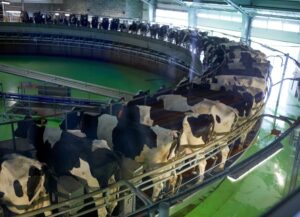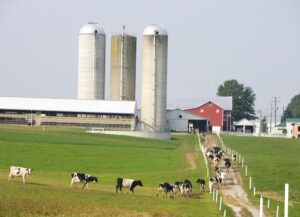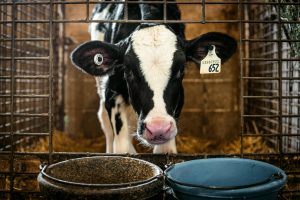Joaquin Ventura & Fernando Diaz
Springing heifers are one of the most important assets of a dairy farm when it comes to achieve high production of quality milk. That is why it is necessary to ensure udder health in these animals, to make sure that they do not suffer intramammary infections at calving, and that the somatic cell counts in the milk produced are low. During the first gestation of a heifer, the presence of clinical or subclinical mastitis may compromise the development of the mammary gland tissue.
If the causative microorganism is Staphylococcus aureus, for example, milk production of that animal during its first lactation may be 10% lower than expected. The somatic cell counts of that cow’s milk are also increased, and in extreme cases, the secretory gland’s tissue may be replaced by scar tissue, permanently decreasing the production potential of that animal or even rendering one or more quarters useless.
More than 9 in 10 pregnant heifers may have intramammary infections caused by coagulase negative staphylococci and S. aureus, with up to 30% of infections caused by just S. aureus. Chronic inflammation in the mammary gland in presence of an infection, causes the somatic cell counts to increase to figures of around 10 million per ml, as well as irreversibly damaging the tissue.
That is why all herds, especially those with problems, should implement health programs to prevent mastitis and eliminate infections that are already present in such a way to maximize milk production and reduce somatic cell counts.
A study conducted by researchers from the University of Georgia (USA) compared the health of the quarters of 76 Holstein pregnant heifers, each randomly subjected to four treatments: drying with ceftiofur hydrochloride, teat sealing with bismuth subnitrate, drying + sealing or controlling (no treatment). Individualized samples of mammary gland secretion were collected from the 304 quarters prior to treatment (day 60 pre-calving) and milk post-calving.
The main results obtained in the study were as follows:
- A total of 63.2% of the heifers (35.9% of quarters) suffered intramammary infections 60 days pre-calving. The most prevalent pathogens were of the genus Staphylococcus (82%), followed by Streptococcus dysgalactiae (15.1%), Pseudomonas (2.0 %) and Trueperella pyogenes (0.9%).
- The prevalence of intramammary infections at 3 and 10 days postpartum dropped to 22.4% (6.1% of quarters). The reduction in the prevalence of infection was very noticeable, even more so with one in four quarters being left untreated. Staphylococcus were again the most prevalent bacteria (89.5%), followed by dysgalactiae (10.5%).
- Untreated sick quarters experienced a cure rate of 55.2% between 60-days pre-calving and post-calving, much lower than that observed in those receiving treatment at dry off (100%), teat sealing (85.7%) or drying + sealing (96.1%).
- All three treatments were effective in reducing somatic cell counts in infected quarters from 3,245, 2,650 and 2,129 x 103/ml to 914, 587 and 534 x 103/ml in quarters that received treatment at drying, teat sealing or a combination of both, respectively.
- No treatment was shown to be effective in preventing future mastitis events.
- When the quarters were not infected 60 days before calving, there were no differences in the parameters recorded in the four experimental treatments.
The study showed that, when there is no intramammary infection in pregnant heifers 60 days before calving, it is indifferent to treat or not treat the quarters. But treatments are very effective in reducing the infection rate and somatic cell counts after calving when there is pre-treatment mastitis and, since most heifers suffer infections in one of their quarters before giving birth, it is advisable to treat them to improve udder health, milk production and the quality of the milk produced.
Reference
Nickerson SC, Kautz FM, Harding AE, Ely LO, Hurley DJ. 2020. Mastitis control in bred dairy heifers using dry cow therapy and teat sealant to prevent new infections and to cure existing ones. Applied Animal Science 36:91–99.
© 2021 Dellait Dairy Knowledge Center. All Rights Reserved.









